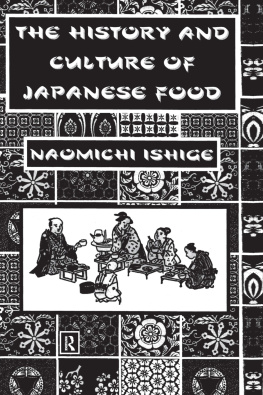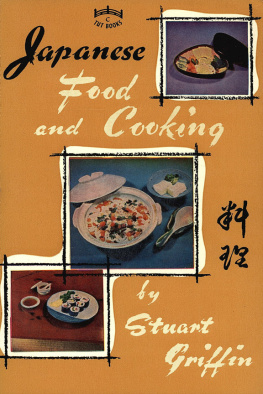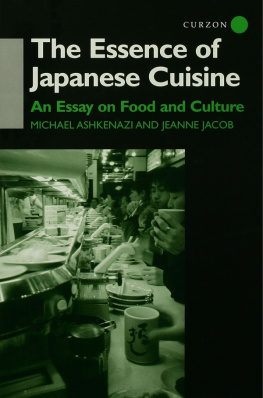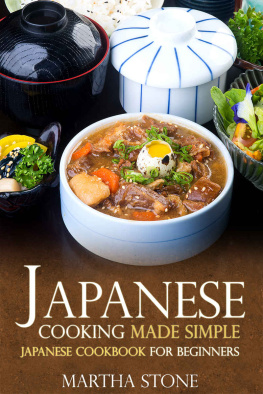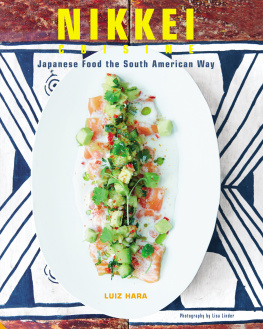The History and Culture of Japanese Food
Despite the popularity of Japanese food in the West today, remarkably little is known about its history. This innovative work is the fist of its kind, is a detailed study of the food and dietary practices of the Japanese from the Palaeolithic era, before rice was cultivated, through the period when the distinctive Japanese culinary tradition reached its culmination (between 1640 and 1860), and on to the present day. This evolution is traced through presenting typical dishes of all periods, condiment, beverages, ingredients, methods of preparation, etiquette, the aesthetics of presentation, eating implements and cooking utensils in the social, political, and economic contexts of their consumption and use. Topics include the spread of soy sauce, the design of Japanese food, introducing the reader to home cookery and regional schools of cuisine that are virtually unknown outside Japan. It makes a unique contribution to the study of Japanese culture, and of culinary history as a whole.
Dr. Naomici Ishige has written prolihcally regarding the Japanese diet. He has authored 12 books, and co-authored or edited an additional 60 works. He is currently Director General at the National Museum of Ethnology, Osaka.
Map of Japan
The History and Culture of Japanese Food
Naomichi Ishige
First published 2001
by Kegan Paul Limited
This edition published 2011
by Routledge
Published 2014
by Routledge
2 Park Square, Milton Park, Abingdon, Oxon OX14 4RN
711 Third Avenue, New York, NY 10017, USA
Routledge is an imprint of the Taylor & Francis Group, an informa business
ISBN: 978-0-203-35790-3 (eISBN)
First issued in paperback 2011
Naomichi Ishige, 2001
All rights reserved. No part of this book may be reprinted or reproduced or utilised in any form or be any electric, mechanical or other means, now known or hereafter invented, including photocopying or recording, or in any information storage or retrieval system, without permission in writing from the publishers.
British Library Cataloguing in Publication Data
Ishige, Naomichi
The history and culture of Japanese food
1.Japanese - Food 2.Food habits - Japan - History 3.Diet - Japan - History
4.Cookery - Japan 5.Cookery, Japanese 6.Japan - Social life and customs
I.Title
394.1'0952
ISBN 978-0-710-30657-9 (hbk)
ISBN 978-0-415-51539-9 (pbk)
Library of Congress Cataloging-in-Publication Data
Applied for.
PREFACE
Every kind of food carries social, historical and cultural information, A human meal consists not only of the absorption of matter as a means of supplying nutrition, but also the absorption of information that is associated with the food. Concerning Japanese food there is a great deal of information that is virtually unknown outside Japan, and that is why I have written this book for publication in English.
With the proliferation of Japanese restaurants in cities around the world since the late 1970s, it has become rather easy to enjoy Japanese cuisine without going to Japan. As the cuisine has gained popularity, many books about it have been written and published in various languages. However, the great majority of them are simply cookbooks. There has been no book designed to inform a non-Japanese audience about Japanese dietary history and how the culture ofjapan is projected through its food. This book is meant to fill that vacuum.
As a cultural anthropologist, I have spent the past 20 years conducting field work on the food and diet of many peoples, mainly in Asia. On the basis of my findings, I present in this book various comparisons between the dietary cultures of Japan and other parts of Asia, especially China and Korea, which are the areas that historically have had the strongest influence on Japan.
Part One surveys the history of Japanese food and diet, from the Stone Age to the present. Part Two describes the contemporary dietary culture of Japan, from table manners to cookery to typical foods. Readers who are primarily interested in the Japanese diet of today may wish to start with Part Two.
Several people and organizations have helped me prepare this book for publication. I am particularly indebted to Stephen Suloway and Kyoto Tsushinsha for the translation and editing of my Japanese manuscript, to the Ajinomoto Foundation for Dietary Culture which provided financial support for that work, and to my longtime friend Prof. Kenneth Ruddle for his comments on the manuscript.
Naomichi Ishige
National Museum of Ethnology, Osaka
January 2000
Map of East Asia
CONTENTS
PART ONE
THE DIETARY HISTORY OF JAPAN |
PART TWO
THE DIETARY CULTURE OF THE JAPANESE |
ILLUSTRATIONS
INTRODUCTION
The Historical Framework
The history of Japan is usually divided into ages and periods corresponding to changes in government. The ancient age, marked by the central authority of the imperial court and its bureaucracy, gave way in the twelfth century to the medieval age of warrior governments. The early modern age began in the sixteenth century with reunification and the emergence of the Tokugawa shogunate, and the modern age dates from the Meiji Restoration of 1868.
Compared to changes in political and economic systems, which are often linked with sudden or even revolutionary shifts in ideology and technology, changes in diet normally exhibit much gentler patterns of advance. Historians tend to take changes of political system as the dividing points for historical eras, yet a change in government does not lead to any rapid change in people's eating habits. New foodstuffs or manners of eating will not spread through a nation without a preparatory period for the adjustment of systems of production and supply. Moreover, the food tastes and preferences that are formed during childhood and youth tend to undergo a slow process of change, transforming gradually as they are transmitted from generation to generation. Therefore, divisions in the history of dietary life differ from the periods into which historical events are generally classified.
Rather than the periodization used by historians, this book adopts an original system conceived by the author as a practical ).
In palaeolithic and neolithic times, the society of the Japanese islands was based on hunting and gathering, and the diet consisted largely of acorns and other nuts, fish and shellfish, and wild game. The cultivation of rice and other crops began and gradually spread through the islands between about 400 BCE and CE 250, which is here called the Early Agriculture Period.
The long interval between the sixth and fifteenth centuries, stretching across most of the ancient and medieval ages, is viewed as the Formative Period of the dietary culture of Japan. Various influences which were absorbed from the Asian continent during the first part of the period were gradually adapted and assimilated into a stable indigenous cuisine.
The period spanning the sixteenth and the first half of the seventeenth centuries (which historians would term the close of the medieval and beginning of the early modern ages) is surveyed as a separate era in , The Age of Change. This is the time when many aspects of dietary culture were altered as a result of external influences introduced through trade with China and western Europe. It corresponds to the social changes accompanying the collapse of the medieval order and reorganization of the feudal system.

